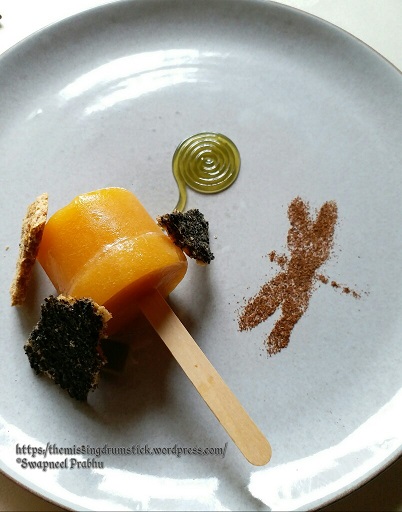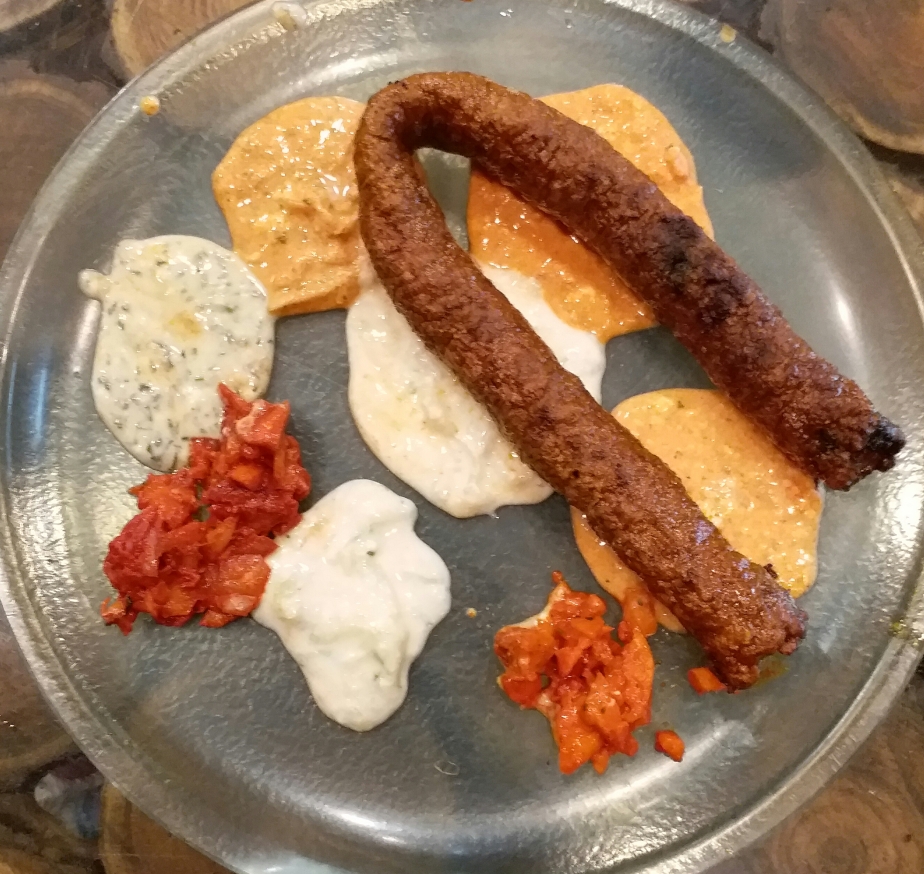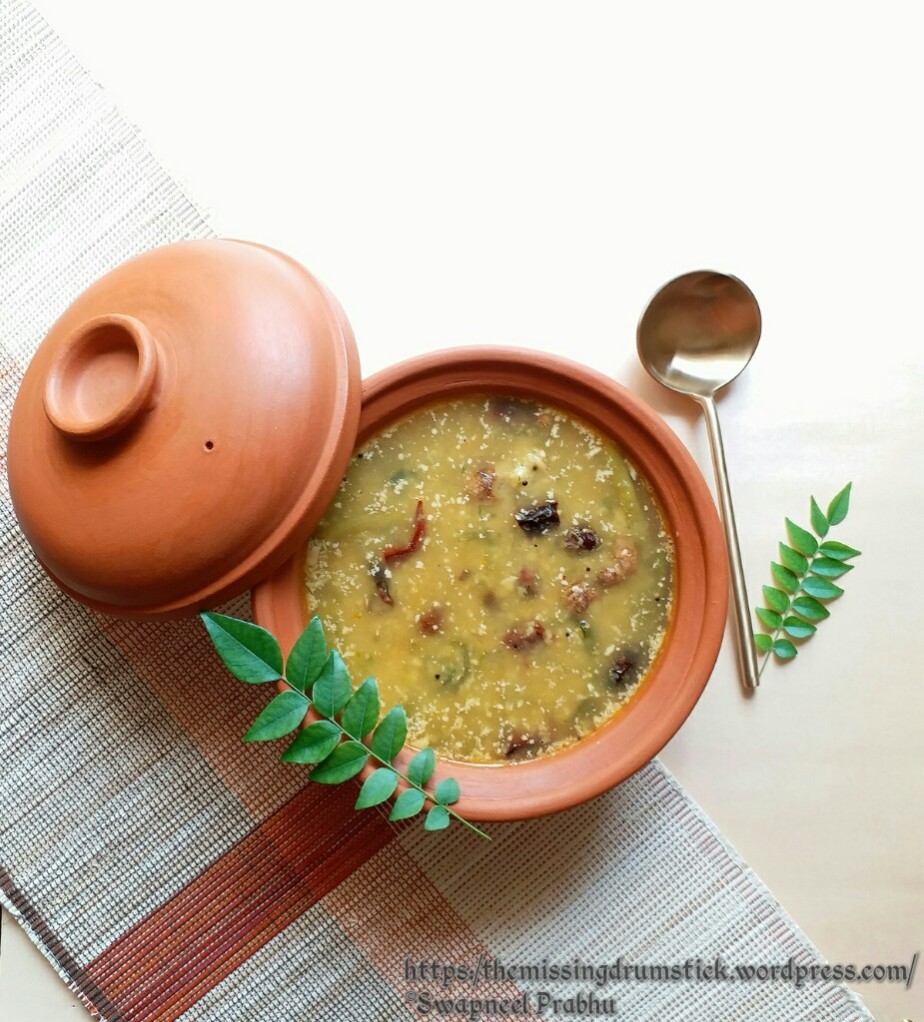Peach Popsicle/ Ice Lolly, Black and White Sesame Seed Meringue and Spiced Jujube Salt.
Every year when school reopened after the Diwali holidays, the huge playground, an enviable feature on the sprawling campus was invaded and encroached upon by wild grass. During the recess, the towering grass would bully us into retreating to some corner of the field to finish our lunch boxes.
With our place in the sun hijacked, we were forced to play in the small clearing between the primary and secondary section buildings, while huge swarms of red dragonflies hovered over us. In the background, our resident Maali (Gardener), Madhu and his kin would relentlessly sickle the grass, clearing one small patch at a time. We kids would be quick to reclaim and assert authority over the sheared patches. The smell of freshly mowed grass was so pronounced that I could almost taste the herbaceous, chlorophylley (Is that even a word?!?!? Well, now it is!) bitter scent hanging in the air.
Being deprived of play time and not being able to relish food can be very unsettling for a kid. And in an attempt to escape it we found comfort in the candy cart whose appearance outside the school gate coincided with the last bell.
Once a week, or whenever our meagre pocket money allowed, we would splurge on an ice candy. After the indulgence, we would be left with just enough money to buy some Bor/Ber (Jujubes). The sweet and sour berries rolled in crystals of rock salt would keep us company as we walked home. On the rare occasion, we would take a pit stop for some Revadi (sesame seed praline/brittle).
The sights, the colours and the flavours, all came together organically to make this dessert course. The ‘Candy’ is a Peach Popsicle. I wanted some brightness and sunshine on the plate to represent the pleasant, sunny, carefree afternoons. I made Revadi Meringue with both white and black sesame seeds and it balanced the sweetness of the peaches with its deep, nutty and earthy flavour and colour. I dehydrated the Ber/Bor and used it in a spiced salt as an exciting component on the plate. Lastly, the peppery, ever so mild but enchanting bitterness of the Bramhi Gel brought alive the fragrance of freshly mowed grass.
Here’s the recipe
Serves 6
Preparation Time : 1 Hour
Cooking Time : 2 Hours (Plus the time required to freeze and set the popsicles)
For the Peach Popsicles
Ingredients:
4 Large Peaches
3/4 Cup Sugar
Water for making the syrup.
Making the Peach Popsicles:
1. Halve the peaches and remove the stones.
2. Take the sugar in a sauce pan, add 3 cups of water, mix well and bring to a boil.
3. Once the simple sugar syrup comes to a boil, lower the flame, reduce to a gentle simmer and place the peach halves, skin side down in it.
4. After cooking for 5-10 mins, turn the peaches.
5. Pinch the papery skin and pull it off. The gentle poaching softens the peaches and loosens the skin, causing it to shrivel and come off easily.
6. Continue to cook for another 5-10 mins or till the peaches turn visibly soft.
7. Take the pan off the heat.
8. Let the peaches sit, cool, further soften and steep in the sugar syrup.
9. Once completely cooled, blend the peaches along with all the syrup into a smooth coulis.
10. Pass through a fine sieve to get rid of any lumps and/or fruit fibres.
11. Pour in the smooth peach coulis into popsicle moulds and freeze overnight.
Tips and Tricks:
1. Limiting the use of water and making a pulpy coulis results in a smooth, satiny product with a texture similar to a sorbet, without the tedious and cumbersome churning.
2. You need to have enough syrup in the pan to just about immerse the halved peaches.
3. If you don’t have popsicle moulds, you can line and seal the base of a cookie cutter/food ring with aluminium foil, pour the peach coulis, insert a popsicle stick and freeze. The thick consistency of the coulis will ensure that the stick stands and stays in place during the freezing. This is exactly how I made it.

For the Revadi Meringue
Ingredients:
Whites of 3 Eggs
3/4 Cup Superfine/Powdered Sugar
Salt (A small Pinch) or Lime/Lemon Juice (A Few Drops)
Making the Revadi Meringue:
1. Dry roast the black and white sesame seeds separately on a low flame, till they release their essential oils and a nutty aroma. Once toasted, set aside to cool.
2. Once cooled, grind into a coarse powder.
3. For making the meringue, place the egg whites in a clean glass or stainless steel bowl.
4. Add a pinch of salt or a few drops of lime/lemon juice to the egg whites.
5. Whip the egg whites with a hand mixer, starting with medium and going up to high speed.
6. When the egg whites start holding their shape, add 3/4th of the sugar and keep whipping till the whites form stiff peaks. The meringue should be glossy and shiny.
7. Now gently fold in the remaining sugar into the meringue using a spatula. Use light hands and be extremely gentle.
8. Divide the meringue into two equal portions.
9. Spread the meringue on a parchment paper or a silicon baking sheet with the help of a flexible silicon/rubber spatula.
10. Spread the meringue in an even layer of 3-4 mm thickness. Flatten and smooth out the surface.
11. You could use two separate parchment/silicon sheets to spread the two portions or you may spread them a few inches apart on the same sheet.
12. Dust the powdered black sesame seeds on one layer and the white ones on the other layer of meringue.
13. Bake in a preheated oven at 160 Degree Celsius for about 1 1/2 hour, or till the meringue sheets dry out and crisp up.
14. Switch off the oven and let the meringue dry out and cool completely in the oven with the oven door slightly ajar.
15. Once the meringue has cooled completely, remove from the oven, break into shards and store in an airtight container till the time you are ready to plate and use them.
Tips and Tricks:
1. Make sure the mixing bowl is completely dry and clean. It is critical to having a good and stable product. Even a drop of water could prevent the meringue from fluffing up and ruin it.
2. Adding a pinch of salt or some lime/lemon juice helps stabilise and make a clear and white meringue.
3. Folding in some of the sugar into the meringue helps make it light and delicate.
4. The meringue shards could make for a delicious teatime snack. You could pipe the meringue into interesting shapes and turn them into sesame meringue kisses or cookies. This base recipe for meringue is extremely versatile and can be infused with any flavour of your choice.
5. Do not grind the sesame seeds into a fine powder. The coarseness provides a lovely texture in contrast to the melt-in-the-mouth baked meringue.
6. The meringues could be used to garnish other desserts or simply crumbled over your favourite ice cream as a delightful textural element.
For the Ber/Bor Churan (Jujube/ Chinese Date Spiced Salt)
Ingredients:
3/4 Cup Dried Ber/Bor/Jujube/ Chinese Dates (Deseeded and roughly chopped in small pieces)
1 Tsp Sugar
1/2 Tsp Himalayan Pink Salt
1/4 Tsp Black Peppercorns
1/4 Tsp Red Chilli Powder
1/4 Tsp Roasted Cumin
Making the Churan/ Spiced Salt:
1. Dehydrate the pieces of dried Ber/Bor/Jujube/Chinese Dates in a preheated oven on the lowest temperature setting for an hour, moving the pieces every 15 minutes.
2. Remove the dehydrated pieces from the oven, cool and blitz into a fine powder with the other ingredients.
3. Store this Churan (Spiced Salt) in an airtight container.
Tips and Tricks:
1. The Ber pieces need to dry out and turn brittle in order to be pulverised into a fine powder. Even the slightest residual moisture can prevent this and turn the Churan lumpy. Low and slow drying in the oven does the trick.
2. If you don’t have an oven, you can still dehydrate the Ber pieces in a pan over a low flame. Keep tossing the pieces and taking it off the heat occasionally to prevent it from burning and becoming bitter.
3. The Churan can be used as a taste-maker to enhance the flavour of your food. It can be used in salad dressings as a compound salt or sprinkled over fruits like Chaat Masala. You could add it to Sherbets, cocktails and mocktails as a flavour booster.
For The Brahmi Gel
Ingredients:
12-15 Bramhi Leaves
100 ml Water
1 Tsp Powdered Sugar
2 Gms Carrageenan
Making The Bramhi Gel:
1. Blend the Bramhi leaves with the water.
2. Pass through a fine strainer.
3. Take a few spoonfuls of the Bramhi juice and mix in the Carrageenan. Set aside.
4. Stir the sugar into the remaining Bramhi juice.
5. Place on a low flame and bring to a boil.
6. Reduce to a simmer and now pour in the Carrageenan mixed juice.
7. Whisk rapidly to get rid of any lumps and disperse the carrageenan evenly.
8. Bring the juice to a boil.
9. Take off the heat and keep stirring and whisking rapidly to cool the juice but prevent it from setting.
10. Pour into a shallow baking dish, plate or any mould of your choice.
11. Refrigerate to cool and set the jelly.
12. Cut the set jelly into the desired shape and serve with the other components.
Tips and Tricks:
1. You want the Gel to have the peppery taste and mild bitterness of the Bramhi leaves. Resist the temptation to add too much sugar and sweeten the gel. It needs just enough sweetness running through it to make it dessert-friendly.
2. Constant whisking ensures no lumps are formed and that the Carrageenan is mixed well in the juice. The rapid whisking may sometimes lead to formation of air bubbles and mild frothing. Pass the mix through a fine sieve before pouring into moulds to get rid of the bubbles.
** The dessert has multiple components but the recipes are fuss free and easy to execute. Planning the prep and cooking is the key to smooth execution. You could use fresh Basil or Mint leaves or any other sweet tasting herb of your choice in case Bramhi leaves are not available.



